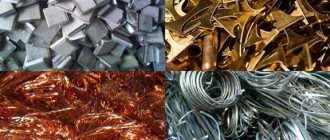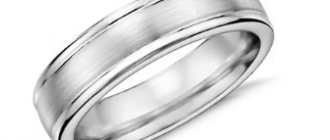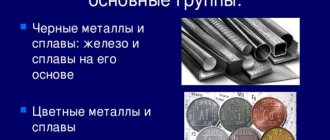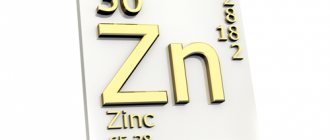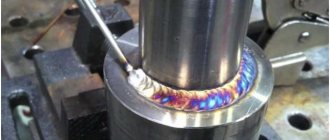In the periodic table, the chemical element titanium is designated as Ti (Titanium) and is located in a secondary subgroup of group IV, in the 4th period under atomic number 22. It is a silvery-white solid metal that is part of a large number of minerals. You can buy titanium on our website.
Titanium was discovered at the end of the 18th century by chemists from England and Germany, William Gregor and Martin Klaproth, independently of each other with a six-year difference. The name of the element was given by Martin Klaproth in honor of the ancient Greek characters of the titans (huge, strong, immortal creatures). As it turned out, the name became prophetic, but it took humanity more than 150 years to become familiar with all the properties of titanium. Only three decades later it was possible to obtain the first sample of titanium metal. At that time, it was practically not used due to its fragility. In 1925, after a series of experiments, using the iodide method, chemists Van Arkel and De Boer extracted pure titanium.
Due to the valuable properties of the metal, engineers and designers immediately paid attention to it. It was a real breakthrough. In 1940, Kroll developed a magnesium-thermal method for obtaining titanium from ore. This method is still relevant today.
Physical and mechanical properties
Titanium is a fairly refractory metal. Its melting point is 1668±3°C. In this indicator, it is inferior to such metals as tantalum, tungsten, rhenium, niobium, molybdenum, tantalum, zirconium. Titanium is a paramagnetic metal. In a magnetic field it is not magnetized, but is not pushed out of it. Image 2 Titanium has a low density (4.5 g/cm³) and high strength (up to 140 kg/mm²). These properties practically do not change at high temperatures. It is more than 1.5 times heavier than aluminum (2.7 g/cm³), but 1.5 times lighter than iron (7.8 g/cm³). In terms of mechanical properties, titanium is much superior to these metals. In terms of strength, titanium and its alloys are on par with many grades of alloy steel.
Titanium is as resistant to corrosion as platinum. The metal has excellent resistance to cavitation conditions. Air bubbles formed in a liquid medium during active movement of a titanium part practically do not destroy it.
It is a durable metal that can resist fracture and plastic deformation. It is 12 times harder than aluminum and 4 times harder than copper and iron. Another important indicator is the yield strength. As this indicator increases, the resistance of titanium parts to operational loads improves.
In alloys with certain metals (especially nickel and hydrogen), titanium is able to “remember” the shape of the product created at a certain temperature. Such a product can then be deformed and it will retain this position for a long time. If the product is heated to the temperature at which it was made, then the product will take its original shape. This property is called “memory”.
The thermal conductivity of titanium is relatively low and the coefficient of linear expansion is correspondingly low. It follows from this that metal is a poor conductor of electricity and heat. But at low temperatures it is a superconductor of electricity, which allows it to transmit energy over considerable distances. Titanium also has high electrical resistance. Pure titanium metal is subject to various types of cold and hot processing. It can be drawn and wired, forged, rolled into strips, sheets and foil with a thickness of up to 0.01 mm. The following types of rolled products are made from titanium: titanium strip , titanium wire , titanium pipes , titanium bushings , titanium circle , titanium rod .
Heat treatment of titanium alloys
To improve performance, titanium alloys are subjected to heat treatment. This process becomes significantly more complicated due to the fact that the restructuring of the crystal lattice of the surface layer takes place at temperatures above 500 degrees Celsius. For VT5 and VT6-S alloys, annealing is often carried out. The holding time may vary significantly, depending on the thickness of the workpiece and other linear dimensions.
Parts made from VT14 must withstand temperatures of up to 400 degrees Celsius at the time of use. That is why heat treatment involves hardening followed by aging. In this case, hardening requires heating the environment to a temperature of about 900 degrees Celsius, while aging involves exposure to an environment with a temperature of 500 degrees Celsius for more than 12 hours.
Induction heating methods allow a wide variety of heat treatment processes to be carried out. Examples include annealing, aging, normalization, and so on. Specific heat treatment modes are selected depending on what performance characteristics need to be achieved.
Chemical properties
Pure titanium is a chemically active element. Due to the fact that a dense protective film is formed on its surface, the metal is highly resistant to corrosion. It does not undergo oxidation in air, in salty sea water, and does not change in many aggressive chemical environments (for example: diluted and concentrated nitric acid, aqua regia). At high temperatures, titanium interacts with reagents much more actively. In air at a temperature of 1200°C, it ignites. When ignited, the metal gives off a bright glow. An active reaction also occurs with nitrogen, with the formation of a yellow-brown nitride film on the surface of titanium.
Reactions with hydrochloric and sulfuric acids at room temperature are weak, but when heated, the metal dissolves intensively. As a result of the reaction, lower chlorides and monosulfate are formed. Weak interactions also occur with phosphoric and nitric acids. The metal reacts with halogens. The reaction with chlorine occurs at 300°C. An active reaction with hydrogen occurs at a temperature slightly above room temperature. Titanium actively absorbs hydrogen. 1 g of titanium can absorb up to 400 cm³ of hydrogen. Heated metal decomposes carbon dioxide and water vapor. Interaction with water vapor occurs at temperatures above 800°C. As a result of the reaction, metal oxide is formed and hydrogen evaporates. At higher temperatures, hot titanium absorbs carbon dioxide and forms carbide and oxide.
Mechanical characteristics
| Section, mm | sТ|s0.2, MPa | σB, MPa | d5, % | d10 | y, % | kJ/m2, kJ/m2 | Brinell hardness, MPa |
| Rolled sheets as delivered according to OST 4.021.051-92 without heat treatment followed by smoothing and straightening (transverse samples) | |||||||
| 8-10 | — | ≥375 | ≥20 | — | — | — | — |
| Seamless cold-rolled and cold-drawn pipes, heat-treated as delivered according to GOST 22897-86 (longitudinal samples) | |||||||
| — | ≥245 | 343-568 | ≥24 | — | — | — | — |
| Rolled sheets in delivery condition according to OST 4.021.051-92, annealed and straightened or annealed with subsequent smoothing and straightening (transverse samples) | |||||||
| 0.5-1.8 | — | ≥375 | ≥25 | — | — | — | — |
| Seamless cold-rolled and cold-drawn pipes, heat-treated as delivered according to GOST 22897-86 (longitudinal samples) | |||||||
| — | ≥147 | ≥216 | — | — | — | — | — |
| Rolled sheets in delivery condition according to OST 4.021.051-92, annealed and straightened or annealed with subsequent smoothing and straightening (transverse samples) | |||||||
| 1.8-6 | — | ≥375 | ≥22 | — | — | — | — |
| 6-10 | — | ≥375 | ≥20 | — | — | — | — |
| Rolled sheets in the delivered condition after annealing (samples across the rolling direction) | |||||||
| 0.3-0.4 | — | 375-540 | ≥25 | — | — | — | — |
| 0.4-1.8 | — | 375-540 | ≥30 | — | — | — | — |
| 1.8-6 | — | 375-540 | ≥25 | — | — | — | — |
| 6-10.5 | — | 375-540 | ≥20 | — | — | — | — |
| Plates are in delivery condition in accordance with GOST 23755-79. Without heat treatment (transverse samples) | |||||||
| 11-60 | — | 370-570 | — | ≥13 | ≥27 | — | — |
| 60-150 | — | 295-540 | — | ≥10 | ≥24 | — | — |
| Plates according to OST 1 90024-94 are in delivery condition. Heat-treated samples (transverse) | |||||||
| 11-60 | — | 390-540 | — | ≥13 | ≥27 | — | — |
| 60-150 | — | 390-540 | — | ≥10 | ≥24 | — | — |
| Forgings and stampings weighing up to 200 kg after annealing | |||||||
| 101-150 | — | 353-540 | ≥17 | — | ≥32.5 | ≥490 | 131-163 |
| 151-250 | — | 353-540 | ≥15 | — | ≥30 | ≥490 | 131-163 |
| 100 | — | 392-540 | ≥20 | — | ≥50 | ≥980 | 131-163 |
| Hot-rolled annealed rods of normal quality according to GOST 26492-85 (longitudinal samples) | |||||||
| 10-12 | — | ≥345 | ≥15 | — | ≥40 | — | — |
| 100-150 | — | ≥345 | ≥15 | — | ≥36 | ≥490 | — |
| 12-100 | — | ≥345 | ≥15 | — | ≥40 | ≥686 | — |
| High-quality hot-rolled annealed rods according to GOST 26492-85 (longitudinal samples) | |||||||
| 10-12 | — | 390-540 | ≥20 | — | ≥50 | — | — |
| 100-150 | — | 350-540 | ≥19 | — | ≥38 | ≥490 | — |
| 12-100 | — | 390-540 | ≥20 | — | ≥50 | ≥980 | — |
| Forged square and round rods after annealing (the direction of sample cutting is indicated) | |||||||
| ≤150 | — | 353-540 | ≥17 | — | ≥32.5 | ≥490 | 131-163 |
| 151-250 | — | 353-540 | ≥15 | — | ≥30 | ≥490 | 131-163 |
| — | 373-540 | ≥17 | — | ≥40 | ≥686 | 131-163 | |
| Hot-rolled annealed round rods in as-delivered condition according to OST 4.021.025-92, OST 4.021.026-92 | |||||||
| 65-100 | — | 390-540 | ≥20 | — | ≥50 | ≥980 | 131-163 |
| 110 | — | 355-540 | ≥19 | — | ≥42 | ≥588 | 131-163 |
| 10-60 | — | ≥345 | ≥15 | — | ≥40 | ≥686 | 131-163 |
| Pressed rods according to OST 1 92020-82. Annealing. Longitudinal samples | |||||||
| 100 | — | 392-539 | — | ≥20 | ≥50 | ≥981 | — |
| Seamless hot-rolled pipes, heat-treated as delivered in accordance with GOST 21945-76 | |||||||
| ≥245 | 343-568 | ≥20 | — | ≥42 | ≥780 | — | |
| Annealed pipes with etched surface, rolled and drawn with an outer diameter of 6.0-62.0 mm. Welded pipes without heat treatment (as delivered) with an outer diameter of 25.0-102.0 mm. Cold drawn annealed pipes with an outer diameter of 8.0-30.0 mm. | |||||||
| — | 400-550 | ≥15 | — | — | — | — | |
| Welded pipes of groups A (annealed) and B (without hot water) in delivery condition according to GOST 24890-81 (samples, the outer diameter is indicated in the cross-section) | |||||||
| 25-38 | — | 392-588 | ≥15 | — | — | — | — |
| 38-102 | — | 294-441 | ≥20 | — | — | — | — |
Methods of obtaining
Titanium is one of the most abundant elements on Earth. Its content in the bowels of the planet by mass is 0.57%. The highest concentration of the metal is observed in the “basalt shell” (0.9%), in granitic rocks (0.23%) and in ultramafic rocks (0.03%). There are about 70 titanium minerals in which it is found in the form of titanic acid or dioxide. The main minerals of titanium ores are: ilmenite, anatase, rutile, brookite, loparite, leucoxene, perovskite and sphene. The world's main titanium producers are the UK, USA, France, Japan, Canada, Italy, Spain and Belgium. There are several ways to obtain titanium. All of them are used in practice and are quite effective.
Magnesium-thermal process.
Ore containing titanium is mined and processed into dioxide, which is slowly and at very high temperatures subjected to chlorination. Chlorination is carried out in a carbon environment. The titanium chloride formed as a result of the reaction is then reduced with magnesium. The resulting metal is heated in vacuum equipment at high temperature. As a result, magnesium and magnesium chloride evaporate, leaving titanium with many pores and voids. Titanium sponge is melted down to produce high-quality metal.
Calcium hydride method.
First, titanium hydride is obtained, and then it is separated into its components: titanium and hydrogen. The process occurs in an airless space at high temperatures. Calcium oxide is formed, which is washed with weak acids. Calcium hydride and magnesium-thermal methods are commonly used on an industrial scale. These methods make it possible to obtain a significant amount of titanium in a short period of time, with minimal monetary costs.
Electrolysis method.
Titanium chloride or dioxide is exposed to high current. As a result, the compounds decompose.
Iodide method.
Titanium dioxide reacts with iodine vapor. Next, titanium iodide is exposed to high temperature, resulting in titanium. This method is the most effective, but also the most expensive. Titanium is obtained of very high purity without impurities or additives.
Description of mechanical symbols
| Name | Description |
| Section | Section |
| sT|s0.2 | Yield strength or proportional limit with tolerance for permanent deformation - 0.2% |
| σB | Short-term strength limit |
| d5 | Elongation after break |
| d10 | Elongation after break |
| y | Relative narrowing |
| kJ/m2 | Impact strength |
Application of titanium
Due to its good anti-corrosion properties, titanium is used for the manufacture of chemical equipment. The high heat resistance of the metal and its alloys facilitates its use in modern technology. Titanium alloys are an excellent material for aircraft, rocket and shipbuilding.
Monuments are made from titanium. And bells made of this metal are known for their extraordinary and very beautiful sound. Titanium dioxide is a component of some medications, for example: ointments against skin diseases. Metal compounds with nickel, aluminum and carbon are also in great demand.
Titanium and its alloys have found application in such areas as the chemical and food industries, non-ferrous metallurgy, electronics, nuclear engineering, power engineering, and electroplating. Weapons, armor plates, surgical instruments and implants, irrigation systems, sports equipment and even jewelry are made from titanium and its alloys. During the nitriding process, a golden film is formed on the surface of the metal, which is not inferior in beauty even to real gold.
Standards
| Name | Code | Standards |
| Non-ferrous metals, including rare ones, and their alloys | B51 | GOST 19807-91, OST 1 90000-70, OST 1 90013-81, OST 4.021.009-92, TU 1715-012-07510017-99, TU 1-5-226-89, TU 1-83-39-79 |
| Steel pipes and connecting parts for them | B62 | GOST 21945-76, GOST 22897-86 |
| Sheets and strips | B53 | GOST 22178-76, GOST 23755-79, OST 1 90218-76, OST 1 90145-74, OST 1 90024-94, OST 4.021.051-92, TU 1-5-093-77, TU 1-5-111 -73, TU 1-5-362-84 |
| Pipes made of non-ferrous metals and alloys | B64 | GOST 24890-81, OST 1 90050-72, OST 1 90051-79, OST 1 90065-72, OST 1 90050-92, TU 1-5-092-91, TU 1-5-101-91, TU 1825- 544-07510017-2004 |
| Rods | B55 | GOST 26492-85, OST 1 92020-82, OST 1 90266-86, OST 1 90173-75, OST 1 90107-73, OST 1 90006-86, OST 4.021.025-92, OST 4.021.026-92, TU 1-5-063-85 |
| Ribbons | B54 | OST 1 90027-71, TU 1-5-057-81 |
| Long and shaped rolled products | B52 | OST 1 92039-75, OST 1 92051-76 |
| Welding and cutting of metals. Soldering, riveting | B05 | OST 95 10441-2002, TU 1-9-77-85 |
| Metal forming. Forgings | B03 | ST TsKBA 010-2004 |
| Pipe fittings and connections | G18 | ST TsKBA 083-2010 |
The concept of thermal resistance and thermal conductivity coefficient
If thermal conductivity characterizes the ability of metals to transfer the temperature of bodies from one surface to another, then thermal resistance shows an inverse relationship, i.e. the ability of metals to prevent such transfer, in other words, to resist. Air has high thermal resistance. It is he who, most of all, prevents the transfer of heat between bodies.
The quantitative characteristic of the change in temperature of a unit area per unit of time by one degree (K) is called the thermal conductivity coefficient. The international system of units usually measures this parameter in W/m*deg. This characteristic is very important when choosing metal products that must transfer heat from one body to another.
Thermal conductivity coefficient of metals at temperature, °C

